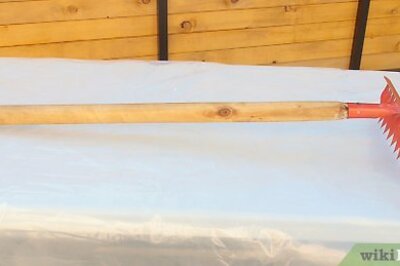
views
Mumbai: Global sell-off triggered the biggest point fall on Nifty since October 2008 and biggest percentage fall since August 2009. The 50-share NSE Nifty fell 209.60 points, to close at 4,923.65 and the 30-share BSE Sensex dropped 704 points, to end at 16,361.15.
Fed's gloomy outlook on the US economy and a sharp fall in rupee (which signaled huge outflow of money) resulted in a bloodbath on Indian equities on Thursday.
Investors, who were already rattled by unstoppable European debt crisis, got further worried with Fed's statement. Dariusz Kowalczyk, senior economist and strategist at Credit Agricole says that the key takeaway from last night's FOMC meet is the negativity in the Fed’s language regarding US gross outlook.
"The size of the operation is somewhat bigger-than-expected which is a good thing. But risk aversion is definitely augmenting and the outlook continues to be negative," he said. Hence, he adds that Indian equities and the rupee will see more depreciation.
As expected, the Fed on Wednesday said it would replace $400 billion of the shorter duration Treasury securities it holds with the same amount of 6- to 30-year Treasuries. It went a step further than expected and said it would buy mortgage securities with the runoff from maturing mortgages in its portfolio. But it also talked about a slow recovery, slow improvement in unemployment and new risks from Europe.
The Fed said, "There are significant downside risks to the economic outlook, including strains in global financial markets." It kept rates unchanged at 0.0-0.25 per cent and left discount rate at 0.75 per cent.
Billionaire investor George Soros said he believed the United States was already experiencing the pain of a double dip recession and that Republican opposition to Obama's fiscal stimulus plans was to blame for sluggish growth.
European markets like France's CAC, Germany's DAX and Britain's FTSE were down 4 per cent each, at the time of closing of Indian equities. Asian markets closed 2-5 per cent. The Dow Jones futures fell 1.5 per cent.
On the home turf, a depreciating rupee was another factor that played spoilsport today. It depreciated to 49.22 per dollar, down 0.90 from previous day's closing value, thus triggering more outflow of money.
"The risk aversion has gone up, which means investors will be scared of investing in markets beyond their immediate shores," explains R Jagannathan, editor-in-chief, moneycontrol.com.
Sharp crack in heavyweight Reliance Industries too shattered the market; the stock fell over 6 per cent, to close below Rs 800. Sources claimed that the Oil Ministry and DGH may lower the company's cost recovery at D1D3.
CNBC-TV18 learnt from Oil Ministry sources that RIL's cost recovery may be cut by $1.8 billion to $3.4 billion. RIL has recovered $5.2 billion against expenditure of $5.6 billion, say sources.
In reply, RIL said Oil Ministry move on KG-D6 cost-recovery was illegal "and any attempt to limit cost-recovery will be challenged in court".
On the sectoral front, the BSE Realty Index hit hard - fell 5.7per cent. Metal, Oil & Gas, Bank, Auto, IT, Capital Goods and Power indices were down 4per cent.
Top losers
Jaiprakash Associates was the biggest loser among largecaps - plunged 9.33 per cent. DLF, Sterlite Industries, Reliance Industries, Tata Motors and Reliance Communications crashed 6-8per cent.
From the financial space, ICICI Bank, HDFC, HDFC Bank and SBI were down 3.5-4.5 per cent. Infosys, TCS and Bharti Airtel tumbled 3-5 per cent.
The BSE Midcap and Smallcap indices fell 3per cent each at close. About nine shares declined for every share rising.
Volume was huge today - total traded turnover on exchanges was more than Rs 2 lakh crore.




















Comments
0 comment